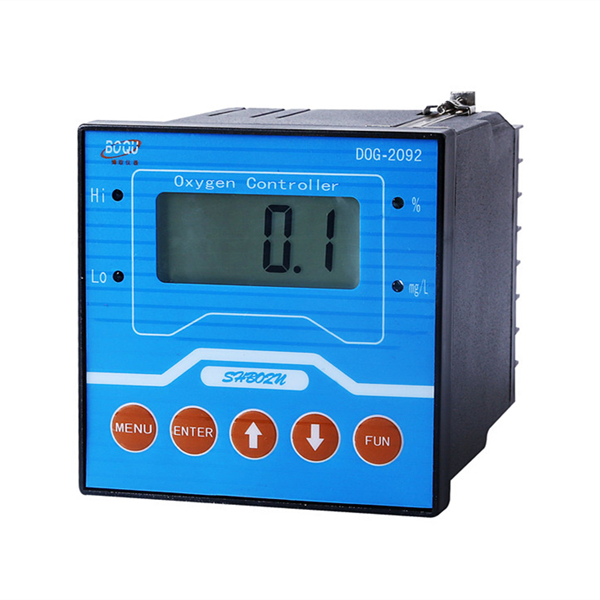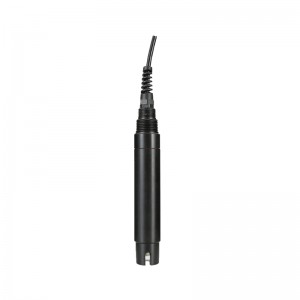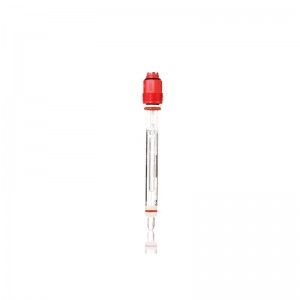Features
DOG-2092 is a precision instrument used for testing and control of dissolved oxygen. The instrument has all the parameters for microcomputer storing, caluating and compensating of the related measured dissolved
oxygen values; DOG-2092 can set the relevant data, such as elevation and salinity. It is also featured by complete functions, stable performance and simple operation. It is an ideal instrument in the field of the dissolved
oxygen test and control.
DOG-2092 adopts the backlit LCD display, with error indication. The instrument also owns the following features: automatic temperature compensation; isolated 4-20mA current output; the dual-relay control; high and
low points alarming instructions; power-down memory; no need back-up battery; data saved for more than a decade.
| Measuring range: 0.00~1 9.99mg / L Saturation: 0.0~199.9% |
| Resolution: 0. 01 mg/L 0.01% |
| Accuracy: ±1.5%F.S |
| Control range: 0.00~1 9.99mg/L 0.0~199.9% |
| Temperature compensation: 0~60℃ |
| Output signal: 4-20mA isolated protection output, double current output available, RS485 (optional) |
| Output control mode: On/Off relay output contacts |
| Relay load: Maximum: AC 230V 5A |
| Maximum: AC l l5V 10A |
| Current output load: Allowable maximum load of 500Ω. |
| On-ground voltage insulation Degree: minimum load of DC 500V |
| Operating voltage: AC 220V l0%, 50/60Hz |
| Dimensions: 96 × 96 × 115mm |
| Dimension of the hole: 92 × 92mm |
| Weight: 0.8 kg |
| Instrument working conditions: |
| ① Ambient temperature: 5 – 35 ℃ |
| ② Air relative humidity: ≤ 80% |
| ③ Except for the earth magnetic field, there is no interference of other strong magnetic field around. |
Dissolved oxygen is a measure of the amount of gaseous oxygen contained in water. Healthy waters that can support life must contain dissolved oxygen (DO).
Dissolved Oxygen enters water by:
direct absorption from the atmosphere.
rapid movement from winds, waves, currents or mechanical aeration.
aquatic plant life photosynthesis as a by-product of the process.
Measuring dissolved oxygen in water and treatment to maintain proper DO levels, are crucial functions in a variety of water treatment applications. While dissolved oxygen is necessary to support life and treatment processes, it can also be detrimental, causing oxidation that damages equipment and compromises product. Dissolved oxygen affects:
Quality: The DO concentration determines the quality of source water. Without enough DO, water turns foul and unhealthy affecting the quality of the environment, drinking water and other products.
Regulatory Compliance: To comply with regulations, waste water often needs to have certain concentrations of DO before it can be discharged into a stream, lake, river or waterway. Healthy waters that can support life must contain dissolved oxygen.
Process Control: DO levels are critical to control biological treatment of waste water, as well as the biofiltration phase of drinking water production. In some industrial applications (e.g. power production) any DO is detrimental for steam generation and must be removed and its concentrations must be tightly controlled.












